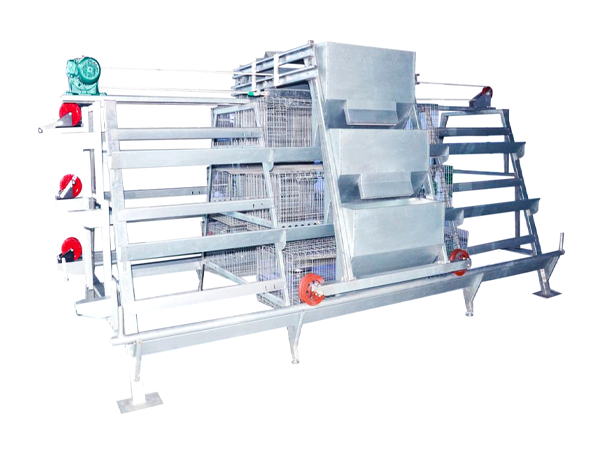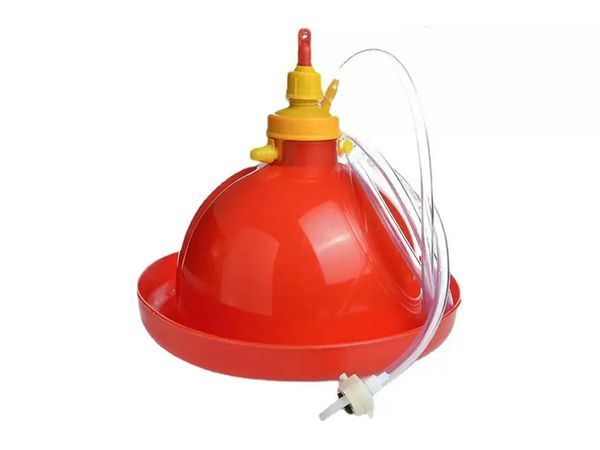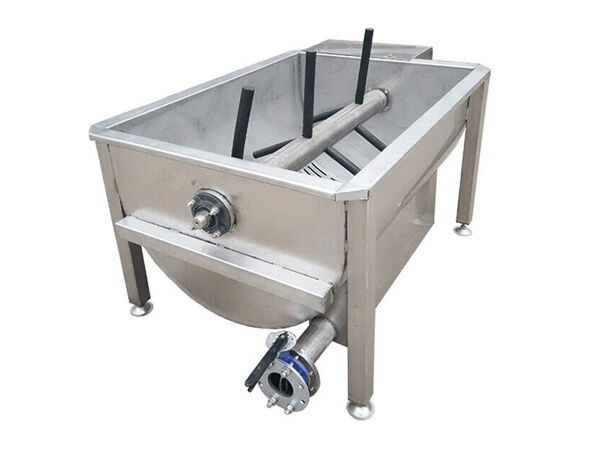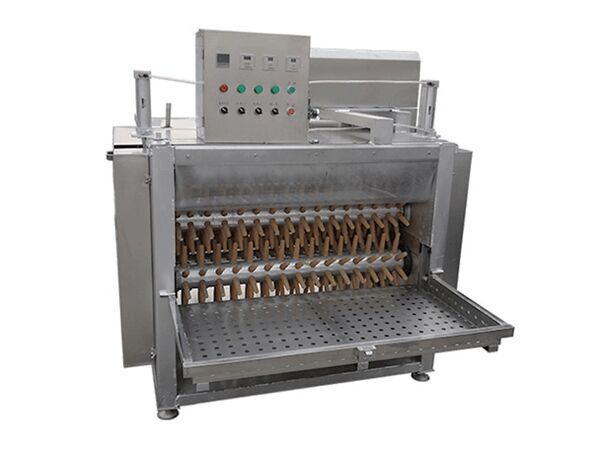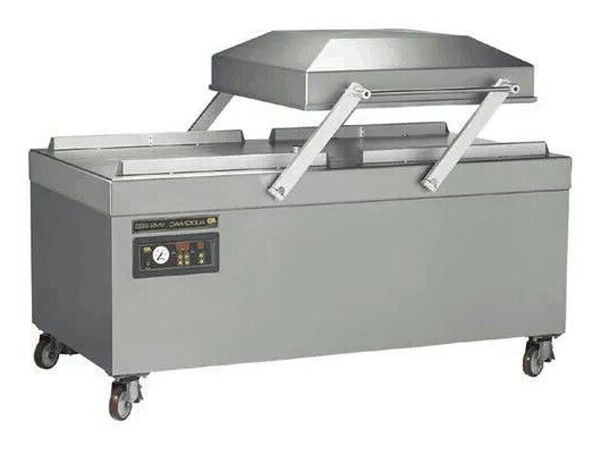
Basic information
Brooding your own chicks in the poultry is always a fun and interesting time when using a brooder heater. The best way to determine if it is warm enough without a thermometer is to watch your chicks. If they are at the outer reaches of the box, it is will be too hot and if they are clustered under the lamp then it is too cold but if they are dotted around the area you have it just right
At around day 28 chicks can go outside for short spells as long as it is warm and sunny. Also if you are hatching in winter you can drop the temperature by another 5 degrees to 65 degree Fahrenheit until they are fully feathered out. Secondly and most importantly, test everything to make sure it works and have it working before you place the chicks in it
Before you introduce your chicks to the brooder, a couple of things need to be done. Even if you bought all the equipment brand new, rinse it down with either some disinfectant or warm, soapy water to make sure it is clean. Chicks are tiny and always huddle together, but don't let that fool you they still require a fair amount of room
A brooder is the place where you move your chicks to after incubation. Here they will spend a lot of time being fed, watered, and loved on and of course, being kept safe and warm. As you can see, the incubator was a brooder for maybe a couple of days, but it is not ideal for long term brooding
At 6-8 weeks old, the floor space needs to be increased to 4 square foot per chick. You are approaching adult dimensions for bird space. Adolescence is the worst time for bad behavior, so plenty of room is advisable to prevent injury, bullying and frustration

Product description
Brooder heater is a digital mother hen. It constitutes of 3 - 5 sensors that are spread inside the brooding space, at the height of chicks, to measure temperature and humidity that chicks are feeling. This information is sent to a small analogue computer
This machine is programmed to determine the age of the chicks and regulates the conditions in the brooding space to meet the chicks' requirement at that specific age, constantly adjusting to maintain the best conditions. Currently, the device is able to control infrared lamps and infrared chicken gas heaters for heating requirements
We are always happy to support our customers and partners with technical questions, products you may want to learn more, click the name to visit
1. Automatic battery cage for pullet, brooder, layer, chicken parents and broiler
2. Chicken feed mill, manure drying machine and egg collection
3. Deep litter plasson drinker, feeder and broiler slaughtering equipment
4. Other poultry farm equipment...
Bookmark our website and contact us now to making enquiry, visiting to our office and factory and checking the sample...
Features
1. Faster and more uniform growth rate of chicks with a smaller difference in size between the biggest and smallest chicks
2. Consistently high survival rate of chicks with the average being 98%
3. Better control of heat
4. Sleep better without having to check on chicks while knowing that everything will be fine
5. Better control over your heating cost and not having to spend more than the chicks need eliminating wastage
Different type of brooders
1. Chicken brooder box
This is what most of us have or start out with a large container that is modified or made to keep chicks in one particular space. This type is great when they are small and don't require too much space. It is usual to move them from the beginner brooder to a larger area with the same type of set up. Also it is difficult for chicks to grip with their feet, so until their legs are much stronger, use paper towels as flooring/bedding. They should be able to be changed over to pine shavings after 7-10 days
2. Brooder lamp
A heat lamp, or ceramic lamp, used to be very popular before the creation of the heating plate. Simply hang the lamp on a chain and a secondary securing method inside the brooder. You then use a thermometer and adjust the height of the lamp to control the temperature for the chicks. It is worth noting that heat lamps pose a significant fire risk, make sure yours is securely fixed in place and is working correctly before you start brooding
3. Infrared heater
Infrared heaters are similar to heating lamps, however the lamps are said to reduce aggression in chicks so they are usually recommended. As they are a large panel they do a great job of spreading the heat around the brooder so you do not get chicks bullying each other for space. They are also thermostatically controlled, which makes them more cost effective and more efficient. While a little more expensive if you are anticipating long-term use, the cost is well worth it
Principles
1. Provide the chicks with just enough space
The goal of brooding chicks is to ensure that they maintain a consistent temperature while they grow. This temperature will continue until they grow enough feathers that will help them to adapt to the environment. In the beginning, you may want to use a smaller container or a larger one with a partition is to form the brooder. As they grow they will need more space to move about, so you will have to move them into a bigger container or remove the partition from the current brooder
2. Have a source of light and heat
The beginning temperature for the chicken brooder should be set at 35 – 37 degrees Celsius. As time goes on, you will need to reduce this about 5 degrees each week until the brooder temperature is equal to room temperature. A lot of poultry farmers use a simple heat lamp for this purpose. The heat lamp provides both light and heat inside the brooder but it is important for you to secure it properly so as not to cause a fire, since a heat lamp attaches with a metal clamp, you can raise it higher on a regular basis to decrease the temperature as the chicks grow their feathery blankets
3. The chicken brooder must provide security
The little chicks are defenseless and may not be able to quickly run away from danger. So, make sure that your brooder is secure. As the chicks grow feathers, they practice flapping their beginner wings, and will begin to perch. At some point, they will most likely begin taking flight and perch on the topmost rim of their brooder where they teeter and totter, and sometimes totter out onto the floor. When they get to that age, it is time to add a screen across the top of the brooder to prevent them from flying over
Basic requirements of a brooder
1. Perimeter can be bought or made
2. Heat source has are several types (heat lamp, ceramic lamps or heat plate)
3. Security is needed to keep out cats, dogs, mice and small children. The area should be completely self contained and accessible by only you
4. Ensure to provide a food container and appropriate food
5. Ensure to provide a suitable drinker and clean, fresh water daily
6. Bedding that is suitable for the chicks. This can be newspaper or paper towels for the first few days, then transition over to pine shavings
Our services
1. We offer the best equipment which can meet our customers every requirement
2. We have long time and rich experience on the products manufacturing. If any machine operation questions after sales, we will reply you within 24 hours with solutions. And customer can be rest assured
3. We offer excellent services in all our equipment
4. We give customers detailed information on the product they want to buy
5. We recommend suitable products based on customer's availability resources
6. Installation team come for installation after customers have received the goods
Frequently ask questions
Q: How to set up a brooder
A: Before you introduce your chicks to the brooder, you have to rinse everything even if all the equipment brand new, rinse it down with either some disinfectant or warm, soapy water to make sure it is clean and secondly and most importantly, test everything to make sure it works and have it working before you place the chicks in it
Q: Do I need a brooder and heat lamp
A: Keeping chicks during summer months can be easier than winter because your house may be hotter. If home temperatures range around 75 degrees, you won't need a heat lamp past week four. But in barns or garages, which may run 60 degrees, chicks need supplementary heat until they are fully feathered at six weeks of age
Q: What is the purpose of a brooder
A: A brooder is used to keep the chicks warm during this crucial time. A simple brooder consists of an infra-red heat lamp with a hood over it to direct heat toward the floor, and a brooder guard
Q: When should I remove my brooder heater
A: Ideally, chicks will not require a heat source when moving from brooder to coop. If the temperatures outside remain above 65°F and the chicks are at least 6 weeks old, they can move into the coop without supplemental heat
Message
Products recommended
 Nigeria-China factory supplying poultry farm equipment and poultry battery cageVanke Machinery & Equipment Nig Ltd was found in 2016.
Nigeria-China factory supplying poultry farm equipment and poultry battery cageVanke Machinery & Equipment Nig Ltd was found in 2016.
1.Products for European design and quality standards, local factory production, 20% discount price to get quality products by combine with our Chinese branch.
2. Provide farm turnkey engineering solutions, quotation, production, installation and long-term maintenance of intelligent farm management systems, poultry equipment and automatic battery cages.
3. Address: After Sinoma Office, 200 Meters Near Danco Filling Station, Lagos/Ibadan Expressway, Lagos State, Nigeria.
4. 24 online Whatsapp NO. : +2348111199996, +8618830120193Read moreGetting price
 Type 1 breeder battery cage (500 to 30,000 birds)The rearing quantity can be increased about 1.5 to 3 times comparing with floor deep litter raising system and be about 1.5 to 4 times less than type 2 in same houseRead moreGetting price
Type 1 breeder battery cage (500 to 30,000 birds)The rearing quantity can be increased about 1.5 to 3 times comparing with floor deep litter raising system and be about 1.5 to 4 times less than type 2 in same houseRead moreGetting price
 Type 2 breeder battery cage (10,000 to 50,000+ birds)The rearing quantity can be increased about 3 to 8 times times comparing with floor deep litter raising system and about 1.5 to 4 times comparing with type 1 in same house and day old egg laying chicken are moved to layer battery cage after growing up to 84 daysRead moreGetting price
Type 2 breeder battery cage (10,000 to 50,000+ birds)The rearing quantity can be increased about 3 to 8 times times comparing with floor deep litter raising system and about 1.5 to 4 times comparing with type 1 in same house and day old egg laying chicken are moved to layer battery cage after growing up to 84 daysRead moreGetting price
 Type 1 layer battery cage (500 to 30,000 birds)Chicken drop manure to the manure belt under the last tier of layer cage bottom mesh
Type 1 layer battery cage (500 to 30,000 birds)Chicken drop manure to the manure belt under the last tier of layer cage bottom mesh
The belt transfer manure to terminal lateral conveyor belt with scraper in the end of every row of layer cages inside of chicken houseRead moreGetting price
 Type 2 layer battery cage (10,000 to 50,000+ birds)It is combined with egg collection belts Italian technology and terminal egg conveyor lifting system and egg conveyor system
Type 2 layer battery cage (10,000 to 50,000+ birds)It is combined with egg collection belts Italian technology and terminal egg conveyor lifting system and egg conveyor system
Chicken drop eggs to bottom layer cage mesh and egg rolls to egg beltRead moreGetting price
 Type 3 layer battery cage (50,000 to 100,000+ birds)The layer cage mesh is made of zinc aluminum alloy or hot galvanized wire
Type 3 layer battery cage (50,000 to 100,000+ birds)The layer cage mesh is made of zinc aluminum alloy or hot galvanized wire
Which has a smooth surface to protect the chicken feet without hurtRead moreGetting price
 Type 1 broiler battery cage (500 to 30,000 birds)It is fully automatic with automatic drinking and feeding and manure removal system
Type 1 broiler battery cage (500 to 30,000 birds)It is fully automatic with automatic drinking and feeding and manure removal system
Broiler cage system is with automatic drinking systemRead moreGetting price
 Type 2 broiler battery cage (30,000+ birds)The feeding system can meet the needs of different ages
Type 2 broiler battery cage (30,000+ birds)The feeding system can meet the needs of different ages
When the chicken cages transferred into the chicken cage and the feed pan will be opened on the floor in 360 degree overflow device that the chickens can eat easilyRead moreGetting price
 Bell plasson drinkerOur service are from design schemes of turnkey poultry farm project and product introduction and offer quotation and delivery and installation instruction and equipment maintenance to farm instruction and so onRead moreGetting price
Bell plasson drinkerOur service are from design schemes of turnkey poultry farm project and product introduction and offer quotation and delivery and installation instruction and equipment maintenance to farm instruction and so onRead moreGetting price
 Feeding trolleyFeed are evenly to add chicken cage feeding trough from the feed pipe by sucking feed from hopper with motorRead moreGetting price
Feeding trolleyFeed are evenly to add chicken cage feeding trough from the feed pipe by sucking feed from hopper with motorRead moreGetting price
 Common feed millFeed mill is professional in producing fodder for chicken and ducks and rabbits and pigs and cows and so on
Common feed millFeed mill is professional in producing fodder for chicken and ducks and rabbits and pigs and cows and so on
The material is grain and corn and soybean and so onRead moreGetting price
 Ground feeder and drinkerIt is to rearing 1 day to 84 days old close adult egg laying chicken and day old egg laying chicken are moved to layer battery cage after growing up to 84 daysRead moreGetting price
Ground feeder and drinkerIt is to rearing 1 day to 84 days old close adult egg laying chicken and day old egg laying chicken are moved to layer battery cage after growing up to 84 daysRead moreGetting price
 Feed pellet machineFeed pellet machine are also named feed pelletizer and chicken feed machine and animal feed pellet machine and animal feed hammer mill and animal feed puffed pellet machine and chicken feed making machineRead moreGetting price
Feed pellet machineFeed pellet machine are also named feed pelletizer and chicken feed machine and animal feed pellet machine and animal feed hammer mill and animal feed puffed pellet machine and chicken feed making machineRead moreGetting price
 Egg incubator machineOur service are from design schemes of turnkey poultry farm project and product introduction and offer quotation and delivery and installation instruction and equipment maintenance to farm instruction and so onRead moreGetting price
Egg incubator machineOur service are from design schemes of turnkey poultry farm project and product introduction and offer quotation and delivery and installation instruction and equipment maintenance to farm instruction and so onRead moreGetting price
 Scraper manure removal systemThe manure scraper will go from the beginning of the hollow to the end
Scraper manure removal systemThe manure scraper will go from the beginning of the hollow to the end
One set is working for 2 rows or 3 rows of chicken cageRead moreGetting price
 Manure drying machineOur service are from design schemes of turnkey poultry farm project and product introduction and offer quotation and delivery and installation instruction and equipment maintenance and to farm instruction and so onRead moreGetting price
Manure drying machineOur service are from design schemes of turnkey poultry farm project and product introduction and offer quotation and delivery and installation instruction and equipment maintenance and to farm instruction and so onRead moreGetting price
 Scalding machineOur service are from design schemes of turnkey poultry farm project and product introduction and offer quotation and delivery and installation instruction and equipment maintenance to farm instruction and so onRead moreGetting price
Scalding machineOur service are from design schemes of turnkey poultry farm project and product introduction and offer quotation and delivery and installation instruction and equipment maintenance to farm instruction and so onRead moreGetting price
 Common defeather machineOur service are from design schemes of turnkey poultry farm project and product introduction and offer quotation and delivery and installation instruction and equipment maintenance to farm instruction and so onRead moreGetting price
Common defeather machineOur service are from design schemes of turnkey poultry farm project and product introduction and offer quotation and delivery and installation instruction and equipment maintenance to farm instruction and so onRead moreGetting price
 Vacuum packing machineOur service are from design schemes of turnkey poultry farm project and product introduction and offer quotation and delivery and installation instruction and equipment maintenance to farm instruction and so onRead moreGetting price
Vacuum packing machineOur service are from design schemes of turnkey poultry farm project and product introduction and offer quotation and delivery and installation instruction and equipment maintenance to farm instruction and so onRead moreGetting price
 Ventilation control systemThe fans in front of the chicken house suck the fresh air and water in pads to the end of the chicken house
Ventilation control systemThe fans in front of the chicken house suck the fresh air and water in pads to the end of the chicken house
Sidewall windows are changing air and both air and water go through the whole chicken houseRead moreGetting price
Contact
By clicking 'Allow All', you agree to the storage of cookies on your device to enhance site navigation, analyze site usage and assist with our marketing efforts.







